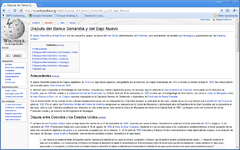Colombiapictures
Full Member
- May 7, 2010
- 123
- 71
- Thread starter
- #41
Mackaydon said:CP,
As for me, I content, with the exception of the 'French connection' mentioned above, to believe the remaining "1605s" sank at sea.
Don.........
The sinking at sea hypothesis can not easily be discarded. There are several facts pointing in this direction.
One possibility, not marked on the charts above, are the several shoals that are not presenting navigation hazards due to the depth. They are deep enough for a galleon to sail over. But what happens in a Norther?
Before the cold front, there is a period of strong south easterly winds. These winds increase the currents, sometimes to over 2.5 Kn. Passing over the shallow bank, the currents can reach 4 Kn.
When the Norther hits with winds of 55 Miles and more, in the opposite direction the interaction of the ripping currents against the powerful wind, huge seas build up. Any galleon caught in this maelstrom will spend a very bad time indeed.
So is this what happened?
CP




